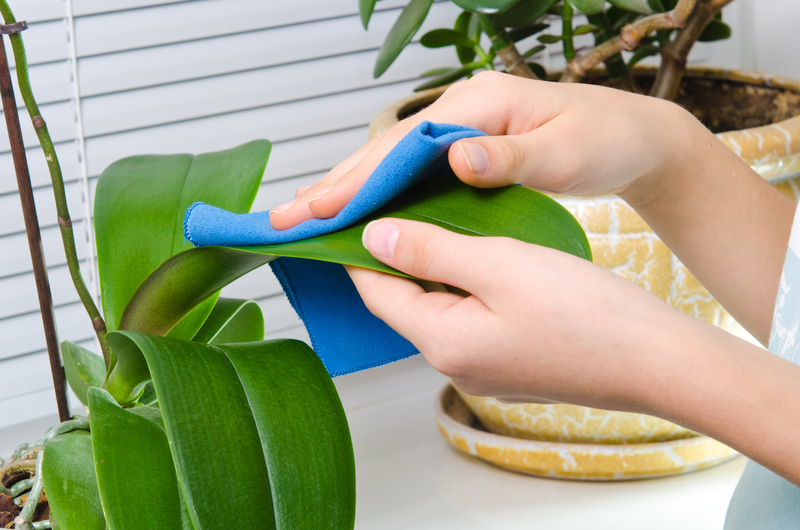Mould-Free Window Sills: A Comprehensive Cleaning Guide
Posted on 02/07/2025
Mould-Free Window Sills: A Comprehensive Cleaning Guide
Maintaining mould-free window sills isn’t merely about appearances—it’s critical for your health and home’s integrity. In our comprehensive cleaning guide, we’ll walk you through everything you need to know about keeping your window sills sparkling, safe, and completely free from mould growth. Whether you’re facing a current infestation or aiming to prevent future problems, this article delivers proven tips and step-by-step instructions for window sill mould removal and prevention.
Understanding Why Mould Grows on Window Sills
Mould growth on window sills is a common household challenge. These unsightly and harmful fungi can easily take hold in damp, poorly ventilated areas like the edges of your windows. Before jumping into cleaning methods, it’s important to know why mould is attracted to window sills in the first place:
- Condensation: Temperature differences between indoors and outdoors cause windows to collect moisture.
- Poor Ventilation: Lack of airflow allows dampness to persist, creating prime conditions for mould.
- Neglected Cleaning: Dirt and dust build-up provide nutrients for mould spores.
- Leaky Windows: Gaps or failing seals permit rainwater intrusion.
The Risks of Mouldy Window Sills
Mould on window sills isn’t just ugly—it can pose serious risks:
- Respiratory problems, especially for children and people with asthma or allergies.
- Damage to window frames and home structures – mould may cause rot or compromise insulation.
- Unpleasant odours that linger in your living space.
- Decreased property value if mould is left untreated.

How to Effectively Clean Mould from Window Sills
Mould-free window sills are achievable with the right approach. Let’s break down the best methods to remove mould and restore your window area:
Safety Precautions Before Cleaning
- Wear gloves to avoid skin contact with mould and cleaning agents.
- Don a mask to prevent breathing in spores.
- Open the window and ensure the area is well-ventilated.
- Protect the surrounding area with a drop cloth or old towels.
Step-by-Step Guide to Mould-Free Window Sill Cleaning
- Remove Surface Dust:
Start by vacuuming up dust and visible debris with a brush attachment. This step eliminates mould’s food sources and prevents spores from spreading during cleaning. - Apply a Cleaning Solution:
Choose an appropriate anti-mould solution. Here are the most effective options:- White vinegar: Known for its natural anti-fungal properties. Fill a spray bottle and apply generously.
- Hydrogen peroxide (3%): Kills mould on non-porous surfaces. Spray and let sit for 10 minutes.
- Commercial mould remover: Use according to the manufacturer’s directions for stubborn mould patches.
- Scrub the Surface:
Use a non-scratch scrub brush or a sponge to scrub the window sill, paying close attention to corners and crevices. For older wooden sills, scrub gently to avoid damage. - Wipe Clean and Dry:
Wipe away residue with a damp, clean cloth. Immediately dry the area with a towel to deny mould the moisture it needs to survive. - Recheck and Repeat:
If stains or patches persist, repeat the treatment. For porous surfaces (e.g., old wood, grout), consider sanding and resealing once the area is dry.
Natural Remedies for Keeping Window Sills Mould-Free
If you prefer to avoid harsh chemicals, natural approaches to keeping window sills mould-free are available:
- Baking Soda Paste: Mix baking soda with water to create a paste. Apply, scrub, and rinse.
- Lemon Juice: The acidity helps break down mould and leaves a fresh scent.
- Tea Tree Oil Solution: Combine a teaspoon of tea tree oil in a cup of water. Spray, sit, and wipe – this natural oil disrupts mould cell structures.
These natural anti-mould methods are ideal for those with children, pets, or sensitivity to industrial cleaners.
Preventing Future Mould with Proactive Maintenance Tips
The secret to mould-free window sills is not just removal, but consistent prevention. Here’s how to deny mould the chance to come back:
Improving Household Ventilation
- Open windows regularly to allow fresh air circulation.
- Use extractor fans in kitchens and bathrooms.
- Install trickle vents or vented windows to maintain airflow without sacrificing security or warmth.
Controlling Humidity & Moisture
- Keep indoor humidity below 60%—ideally 30-50%.
- Use a dehumidifier in damp-prone rooms.
- Wipe down condensation from windows every morning during colder months.
Regular Window and Sill Inspections
- Check for leaks or perished window seals that may let water in.
- Repair cracks in window frames that could harbor moisture.
- Clean dust and debris from window tracks and sills weekly.
Protective Sealants & Paints
- After cleaning, apply a mould-resistant sealant or anti-fungal paint to wooden or painted sills.
- This creates a protective barrier against future mould growth.
Special Considerations for Different Window Sill Materials
Maintaining mould-free window sills requires special attention depending on what your sills are made from:
Wooden Window Sills
- Use less water and avoid soaking to prevent wood swelling.
- If mould stains persist, lightly sand the affected area after cleaning and reseal with wood-specific lacquer or paint.
- Regular waxing or oiling provides additional protection for finished wood sills.
UPVC/Plastic Window Sills
- These surfaces are less porous, making cleaning simpler and quicker.
- A diluted bleach solution can be used sparingly for heavy black mould, but rinse thoroughly afterwards.
- Avoid abrasive pads that can scratch plastics, harboring new mould spores in the grooves.
Stone or Tile Sills
- Check grout and caulking for cracks—mould can grow within them, so reseal if needed.
- For natural stone, avoid acidic cleaners which may damage the finish.
- Polish and seal stone sills annually to help resist mould and stains.
How Often Should You Clean Window Sills to Stay Mould-Free?
The best defence against mouldy window sills is regular cleaning. Here is a recommended schedule:
- Weekly: Wipe down sills and window tracks to remove dust and moisture.
- Monthly: Inspect for early mould signs and deep clean as required.
- Seasonally: Check window seals, frames, and repaint or reseal sills if necessary.
When to Consider Professional Help
Persistent mould on window sills, or signs of mould spreading onto surrounding plaster, walls, or insulation, may require professional assessment. Consider these warning signs:
- Large, spread-out patches of mould returning after multiple cleanings.
- Musty odours that persist or worsen over time.
- Mould growth on inaccessible or structural parts of the window or wall (behind sills, inside the wall cavity).
- Health symptoms like headaches, cough, or asthma attacks linked to time spent in the affected room.
Certified mould remediation specialists use advanced tools (such as HEPA vacuums, foggers, and moisture probes) to safely remove and prevent worsened damage, protecting both your property and household health.

Top Frequently Asked Questions about Mould on Window Sills
- Q: What are the early signs of mould on window sills?
A: Watch for black, green, or white patches, fuzzy growths, or lingering damp smells around the window area. - Q: Are commercial mould removers safe for all surfaces?
A: Many are formulated for specific surfaces. Always read labels carefully and test a small area before complete use. - Q: How can I stop condensation forming on window sills?
A: Improve ventilation, keep blinds open (especially at night), and consider secondary glazing or window insulation film in winter. - Q: Is it necessary to repaint after mould removal?
A: If mould has stained the paint or if you’ve sanded away finish, repaint with mould-resistant paint after complete drying. - Q: Do plants on window sills contribute to mould?
A: Yes, overwatered plants can increase humidity and encourage growth. Use saucers and wipe excess water regularly.
Conclusion: Achieving Long-Term Mould-Free Window Sills
Restoring mould-free window sills is within every homeowner’s reach. Regular cleaning, vigilant inspection, and smart preventive strategies are your best allies. Whether you rely on natural remedies or specialist cleaners, keeping humidity in check and your window area spotless will significantly cut down on the likelihood of mould returning. Remember, persistent or widespread growth indicates a deeper problem—don’t hesitate to call in professionals for lasting peace of mind. With these steps, your window sills can remain healthy, beautiful, and mould-free for years to come.




